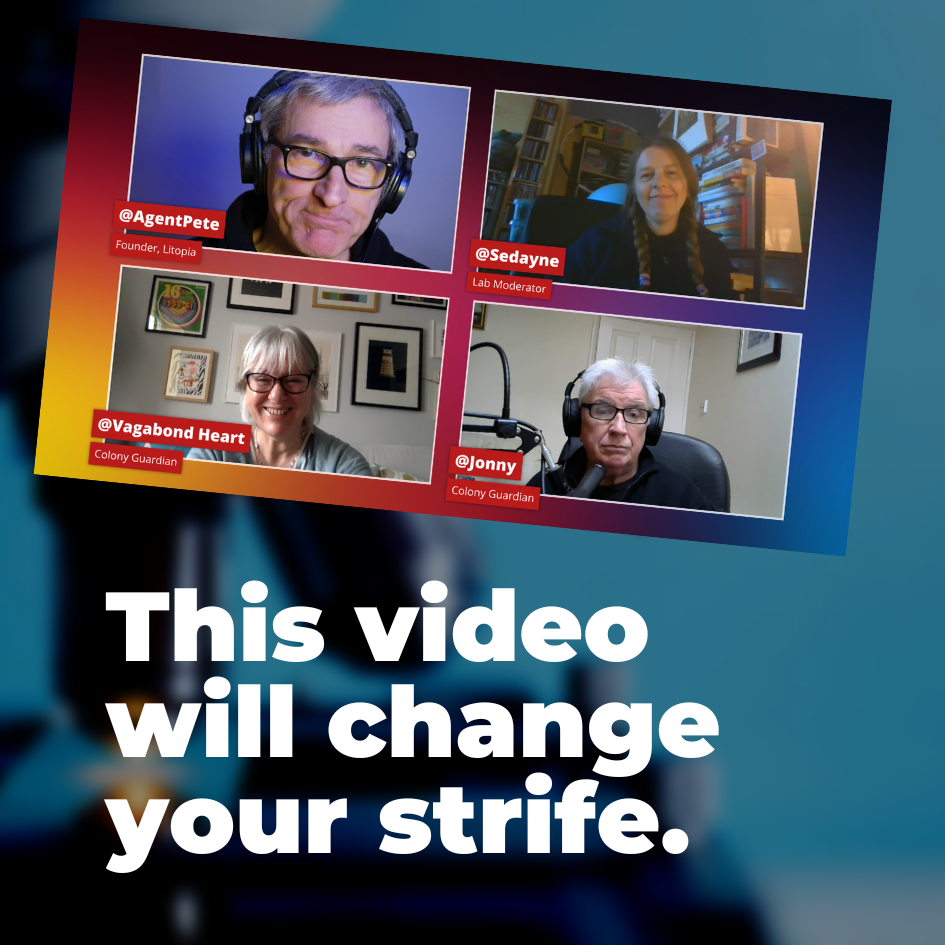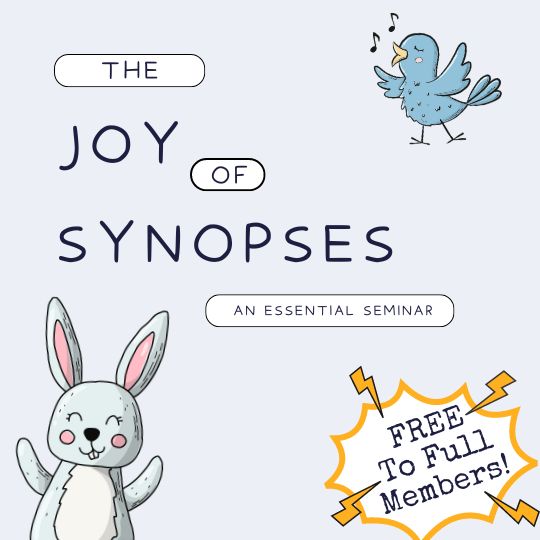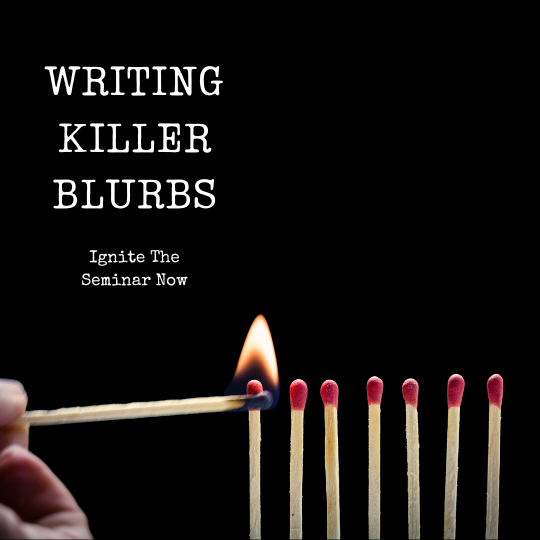M
Marc Joan
Guest
OK, this is mainly relevant to short story submissions, but I imagine some of the principles transfer to longer formats....To me, points 3 and 5 seem particularly important: make sure the story's opening is captivating, and write something that couldn't not be written. Think I need to work on both of those...
From the AGNI newsletter:
Five things the submitting writer should know
"Dry again?" said the Crab to the Rock-Pool. "So would you be," replied the Rock-Pool, "if you had to satisfy, twice a day, the insatiable sea."
Connolly's imagined exchange will not bear much logical parsing -- as in: what is the Rock-Pool and who is the Crab? No, I went to it just now for the phrase "the insatiable sea," because, while the submitter thinks of herself as a lone writer writing (at least this submitter has always thought of himself that way), the magazine editor hauling in the bin packed with envelopes -- or nowadays opening the "Submissions Manager" on the office computer -- cannot but react each time to the quantity, the oceanic volume. It might, therefore, be useful for the veteran as well as prospective submitter to know how an editor regards the whole business. And, as this is the age of the so-called "listicle," I'll assemble this in the form of Five Things the Submitting Writer Should Know.
1. I already invoked the "insatiable sea" -- but now I should give the prospective submitter a sense of what I mean by that. In the days of paper -- only, before electronic submissions carried the day at AGNI as elsewhere, I could expect to find, every day and five days a week, a postal bin about ¾ full with envelopes large and small. Work in all genres. It took hours to open those envelopes and sort the contents into categories: submissions that were clearly not right for the magazine and could be returned (more on this later); those that needed closer screening before a decision could be made; and those that had obvious appeal and would circulate to one or more readers. Though every day's mail was/is obviously different, the proportions here were roughly 5/8, 2/8, and 1/8, though that last figure is probably a bit high.
Those proportions have not changed very much with the advent of online submissions, though other things have. When I log on in the morning now, I am not surprised to find upward of a hundred new files in the bin. The genre distribution has not changed either, but the volume has gone up, most likely because of the ease of making multiple submissions electronically. And the same basic sorting happens, though now the categories -- not right for us, look more closely, and promising -- are separated with a finger-tap. Our in-house readers receive electronic forwards.
2. What happens next? This part has not changed so much. What happens next is the time-honored work of reading and evaluating -- looking for the work that excites in its excellence and that falls within the aesthetic profile of the magazine. What is that profile? Here I would say the prospective submitter has to do a bit of reading, at least the due diligence of sampling, in order to get the feel of our -- or any journal's -- tonal and thematic range. I believe that our range is quite ample, but it's for the writer to make her own call. I can say that of that 5/8 of submissions that do not make the first cut, this is in many cases less because the work is not accomplished in its way, but because its way is not ours. Straight-up gritty realism, for instance, or concrete poetry, are just not part of our aesthetic profile. Some time spent perusing AGNI would have preempted those pitches. It does take some time to scout out likely venues for work, but it also takes time sending and re-sending to ones that turn out to be unlikely.
3. Cover letters. We look at cover letters, we take in the gist of their contents. We do not read laborious summaries of what we are likely to find in the submitted work, nor do we harken that closely to long accounts of the process of their composition. Were there world enough and time . . . Similarly, we note -- but quickly -- the submitter's previous publications. Listing the best few will suffice. We are saving our most focused attention -- and this is vital -- for the first sentences or lines. Not because we expect them to hold some trick or special thrill, but because the language of the opening -- or the poem's first lines -- so often contains what we sometimes think of as the DNA of the whole. This is not to say that we will not direct the same attention to the rest of the work, but to get to the rest, we have to have encountered the unique promise of the beginning. I frame the business to myself as a vexing paradox. As an editor confronting the day's abundance, I want to find a reason to stop reading as soon as I can. As an editor in love with good writing, I want to find that I cannot stop.
4. "If I am a writer without a track record of previous publications . . ." Great! We would love to love what you send. And while I'm generating paradoxes, here is another. While we get a number of established and even well-known writers sending us their work, we very often have to reject it for the aforementioned reason: that it's just not right forAGNI. And writing a letter turning down the poetry or prose of a prize-winning writer is not high on the list of the day's pleasures. Whereas finding myself unable to stop reading the work of a new or unfamiliar writer is -- well, it's frankly one of the two or three things that make this job compelling to me. I love the sense of building pleasure that comes when the feat is pulled off -- when the spell is first created, and then, miraculously, sustained. I would say that in every issue half of the pieces are by writers who felt like discoveries in the reading.
5. Finally, most important -- and maybe the thing most rarely mentioned in discussions of literary magazines and what they look for -- is the fact of the art itself: the fiction, poetry, or essay that arrives, whether on paper or backlit by computer light. That it should never seem to the person receiving it like a submission. That it should not feel like another rung on some writer's ladder to some imagined success, a potential bit of cachet for the c.v. That it should feel like -- and be -- an authentic and necessary expression, something that couldn't not be written. That it be part of the long sustaining continuum of literature. We know when we are in the presence of that and, believe me, we are interested.
From the AGNI newsletter:
Five things the submitting writer should know
"Dry again?" said the Crab to the Rock-Pool. "So would you be," replied the Rock-Pool, "if you had to satisfy, twice a day, the insatiable sea."
Connolly's imagined exchange will not bear much logical parsing -- as in: what is the Rock-Pool and who is the Crab? No, I went to it just now for the phrase "the insatiable sea," because, while the submitter thinks of herself as a lone writer writing (at least this submitter has always thought of himself that way), the magazine editor hauling in the bin packed with envelopes -- or nowadays opening the "Submissions Manager" on the office computer -- cannot but react each time to the quantity, the oceanic volume. It might, therefore, be useful for the veteran as well as prospective submitter to know how an editor regards the whole business. And, as this is the age of the so-called "listicle," I'll assemble this in the form of Five Things the Submitting Writer Should Know.
1. I already invoked the "insatiable sea" -- but now I should give the prospective submitter a sense of what I mean by that. In the days of paper -- only, before electronic submissions carried the day at AGNI as elsewhere, I could expect to find, every day and five days a week, a postal bin about ¾ full with envelopes large and small. Work in all genres. It took hours to open those envelopes and sort the contents into categories: submissions that were clearly not right for the magazine and could be returned (more on this later); those that needed closer screening before a decision could be made; and those that had obvious appeal and would circulate to one or more readers. Though every day's mail was/is obviously different, the proportions here were roughly 5/8, 2/8, and 1/8, though that last figure is probably a bit high.
Those proportions have not changed very much with the advent of online submissions, though other things have. When I log on in the morning now, I am not surprised to find upward of a hundred new files in the bin. The genre distribution has not changed either, but the volume has gone up, most likely because of the ease of making multiple submissions electronically. And the same basic sorting happens, though now the categories -- not right for us, look more closely, and promising -- are separated with a finger-tap. Our in-house readers receive electronic forwards.
2. What happens next? This part has not changed so much. What happens next is the time-honored work of reading and evaluating -- looking for the work that excites in its excellence and that falls within the aesthetic profile of the magazine. What is that profile? Here I would say the prospective submitter has to do a bit of reading, at least the due diligence of sampling, in order to get the feel of our -- or any journal's -- tonal and thematic range. I believe that our range is quite ample, but it's for the writer to make her own call. I can say that of that 5/8 of submissions that do not make the first cut, this is in many cases less because the work is not accomplished in its way, but because its way is not ours. Straight-up gritty realism, for instance, or concrete poetry, are just not part of our aesthetic profile. Some time spent perusing AGNI would have preempted those pitches. It does take some time to scout out likely venues for work, but it also takes time sending and re-sending to ones that turn out to be unlikely.
3. Cover letters. We look at cover letters, we take in the gist of their contents. We do not read laborious summaries of what we are likely to find in the submitted work, nor do we harken that closely to long accounts of the process of their composition. Were there world enough and time . . . Similarly, we note -- but quickly -- the submitter's previous publications. Listing the best few will suffice. We are saving our most focused attention -- and this is vital -- for the first sentences or lines. Not because we expect them to hold some trick or special thrill, but because the language of the opening -- or the poem's first lines -- so often contains what we sometimes think of as the DNA of the whole. This is not to say that we will not direct the same attention to the rest of the work, but to get to the rest, we have to have encountered the unique promise of the beginning. I frame the business to myself as a vexing paradox. As an editor confronting the day's abundance, I want to find a reason to stop reading as soon as I can. As an editor in love with good writing, I want to find that I cannot stop.
4. "If I am a writer without a track record of previous publications . . ." Great! We would love to love what you send. And while I'm generating paradoxes, here is another. While we get a number of established and even well-known writers sending us their work, we very often have to reject it for the aforementioned reason: that it's just not right forAGNI. And writing a letter turning down the poetry or prose of a prize-winning writer is not high on the list of the day's pleasures. Whereas finding myself unable to stop reading the work of a new or unfamiliar writer is -- well, it's frankly one of the two or three things that make this job compelling to me. I love the sense of building pleasure that comes when the feat is pulled off -- when the spell is first created, and then, miraculously, sustained. I would say that in every issue half of the pieces are by writers who felt like discoveries in the reading.
5. Finally, most important -- and maybe the thing most rarely mentioned in discussions of literary magazines and what they look for -- is the fact of the art itself: the fiction, poetry, or essay that arrives, whether on paper or backlit by computer light. That it should never seem to the person receiving it like a submission. That it should not feel like another rung on some writer's ladder to some imagined success, a potential bit of cachet for the c.v. That it should feel like -- and be -- an authentic and necessary expression, something that couldn't not be written. That it be part of the long sustaining continuum of literature. We know when we are in the presence of that and, believe me, we are interested.



